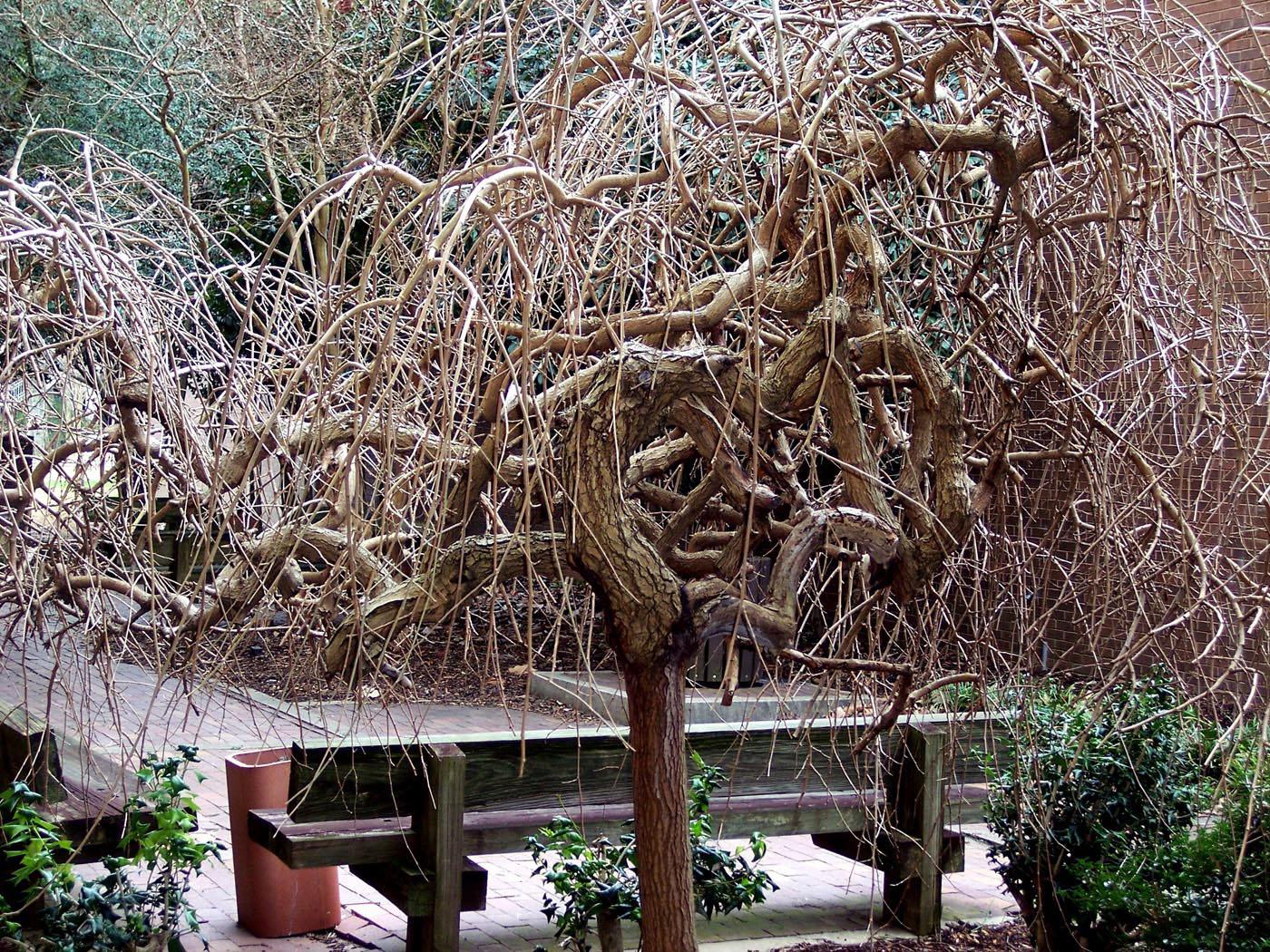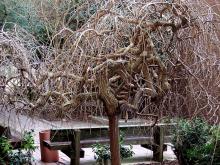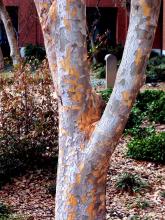Information Possibly Outdated
The information presented on this page was originally released on January 13, 2005. It may not be outdated, but please search our site for more current information. If you plan to quote or reference this information in a publication, please check with the Extension specialist or author before proceeding.
Enliven winter gardens with form and texture
By Norman Winter
MSU Horticulturist
Central Mississippi Research & Extension Center
There is so much to enjoy and see in the winter garden once trees and shrubs have been stripped bare of foliage. The dormant season reveals whether or not we planned for form and structure in our gardens.
Bark can play an important role in winter landscapes if we choose the right trees. Deciduous trees make a dramatic landscape impact once leaves have fallen and the bark is exposed. We can certainly make gardens more interesting in the winter by planting trees and shrubs that offer striking bark.
Notice how the patterns of bark vary from tree to tree. As trees and shrubs get older and grow wider, the bark may peel, split or shed to create a wonderful new look. Some surfaces are smooth, some textured, and beautiful patterns and colors come alive in the winter.
The river birch bark is among the most beautiful. It loses its bark in papery plates, exposing the inner bark that is colored gray-brown to cinnamon-brown. The Heritage variety sheds to white or salmon-white bark.
River birch is well suited to the portion of the landscape that stays wet. They may become dry in the summer. It thrives in soils that have a pH below 6.5. These trees are medium- to fast-growers, reaching 30 to 40 feet in 20 years and eventually topping out at 70 feet.
Crape myrtles always have pretty bark, but some of the new varieties are outstanding. Crape myrtles are known for their beautiful summer flowers, but smooth, twisted, gray-brown bark makes them an outstanding choice for winter wood, too. The bark looks like it has been sanded and then polished.
The crape myrtle breeding program began in 1962 at the U.S. National Arboretum when researchers crossed Lagerstroemia indica with another from Japan called Lagerstroemia fauriei. One of the resulting traits was dark, reddish-brown, mottled bark.
One of the hybrids is the Natchez, which after about 5 years of age develops a dark, cinnamon-brown, mottled exfoliating bark. This is a large crape myrtle that reaches 21 feet high and wide. It has pure white flowers, and the leaves turn orange to red in the fall.
The Apalachee is about 12 feet 6 inches tall and 8 feet 6 inches wide with light lavender flowers and foliage that turns purple-red in the fall. The bark sheds to reveal cinnamon to chestnut-brown coloring.
Zuni is a semi-dwarf, multi-stemmed crape myrtle reaching 9 feet tall and 8 feet wide. The flowers are medium lavender. The leaves are glossy and become dark green before turning orange-red to dark red in the fall. The wood becomes gray, then turns light brown and gray on older branches and the trunk.
On the Mississippi State University campus there are several Lacebark elms (also called Drake elms) that possess some of the most striking bark seen anywhere. They almost look camouflaged with exfoliating sheets in gray, brown and orange.
One of the most exotic-looking and greatly underused trees is the Chinese parasol tree (Firmiana simplex). This tree is suitable for most of the South and reaches 30 to 45 feet tall. The bark is smooth and green, and gives a tropical appearance.
But not all winter landscape appeal comes from colorful bark. The weeping mulberry may be unsurpassed in beauty because once its leaves have dropped, it reveals its fantastically twisted and gnarled branches.
Gertrude Jekyll wrote: "In summertime one never really knows how beautiful are the forms of deciduous trees. It is only in winter, when they are bare of leaves, that one can fully enjoy their splendid structure and design." I concur.









